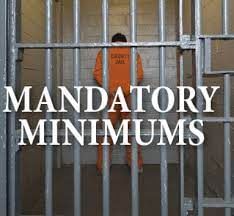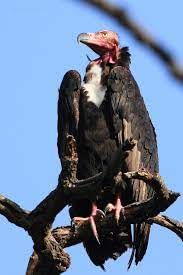UPSC Daily Current Affairs- 1st February 2023 | Current Affairs & Hindu Analysis: Daily, Weekly & Monthly PDF Download
GS-I
Amrita Sher-Gil
Context
Recently, The National Gallery of Modern art in association with Liszt Institute, Hungarian Cultural Centre, New Delhi celebrated the 110th birth anniversary of Amrita Sher-Gil.
About Amrita Sher-Gil:
- Amrita was an Indian-Hungarian painter and one of the avant-garde women artists.
- Though her art education was from Paris, she has discovered the artistic traditions of India.
- She travelled widely in India during 1939 which brought a robust impact on the style of expression, figuration and composition in her artwork.
- Her famous works are
- A group of three girls.
- Brahmacharis, Bride’s toilet.
- Lady Daljit Singh of Kapurthala, Musicians, women on Charpoy, Camels and Village girls.
Source: Indian Express
Shumang Leela
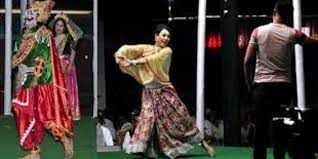
Context
A traditional style of theatre from Manipur has entertained and informed audiences for centuries.
About Shumang Leela:
- The meaning of this theatre form is “courtyard performance”, which is performed in Manipur.
- In this, the roles of women are all played by men, called Nupi Shabis.
- In the case of women’s theatre groups, the roles of men are played by women.
- The female roles are taken up by transgender actors.
- The tradition is believed to be descended from Lai Haraoba, a ritual of the Meitei community of Manipur.
- The plays provide a vehicle for educating the public about social, political, and economic issues.
- Types - Shumang Leela is of two types
- Nupa Shumang Leela - Performed only by men
- Nupi Shumang Leela - Performed only by women
Source: The Hindu
GS-II
Project 39A
Context
Even as the Supreme Court has called for reforming death penalty sentencing, trial courts awarded 165 death sentences in 2022, the highest in over two decades, according to the Annual Death Penalty Report, 2022. The report will be released on Monday by Project 39A
- This shift has been sharply influenced by the extraordinary sentencing of 38 persons to death in Ahmedabad in a single bomb blast case, representing the largest number of persons sentenced to death in a single case since 2016
Project 39A
- It is a criminal reforms advocacy group with the National Law University, Delhi.
- It is inspired by Article 39-A of the Indian Constitution, a provision that furthers the intertwined values of equal justice and equal opportunity by removing economic and social barriers
- Project 39A aims to trigger new conversations on legal aid, torture, forensics, mental health in prisons, and the death penalty, using empirical research to re-examine practices and policies in the criminal justice system
- The dismal state and sometimes the absence of record-keeping in the police, prisons and courts along with multiple barriers to accessing records/ data complicates criminal justice research in India.
Source: Indian Express
Mandatory Minimum Sentencing
Context
A CJI Chandrachud-led bench of the Supreme Court decided to examine a petition challenging the constitutional validity of Section 376 DB of the Indian Penal Code.
- This section describes the punishment for gangrape of a minor under 12 years of age, to the extent that it prescribes a ‘minimum mandatory sentence’ of life imprisonment for the remainder of the convict’s life and even death.
Mandatory minimum sentencing:
- The concept of mandatory minimum sentencing refers to “a sentence which must be imposed without leaving any discretion to the court”.
- It means a quantum of punishment which cannot be reduced below the period fixed – the Apex court held in its 2016 ruling in ‘Mohd Hashim vs State Of UP And Others’.
- Essentially, this predetermines the minimum punishment or sentence for certain offenses which are considered to be more serious than others, with a view to ensure justice and not let the perpetrator of such an offense go unpunished.
- No matter what the unique, individual circumstances of the offender or the offense might be, the court must mandatorily award this minimum period of sentencing for the offenses which prescribe it.
What provisions award a mandatory sentence
- A concept that comes primarily from the Canadian and American legal systems; in India, such sentences are prescribed for all sexual offenses under the Prevention of Children from Sexual Offences (POCSO) Act except the offense of sexual harassment
- Under Section 8 of the POCSO Act, a punishment of 3-5 years has been prescribed for offenses under Section 7 which deals with offenses of sexual assault against children. However, imposing the minimum punishment in such cases is mandatory.
- When the legislature has prescribed a minimum sentence without discretion, the same cannot be reduced by the courts.
- In such cases, imposition of minimum sentence, be it imprisonment or fine, is mandatory and leaves no discretion to the court,” the Supreme Court reiterated in its 2019 ruling in ‘State Of Madhya Pradesh vs Vikram Das’.
- However, it was first in the year 1983, following nationwide protests in the wake of the Supreme Court’s 1978 ruling acquitting two policemen for the rape of a 16-year-old Adivasi girl in ‘Tukaram And Ors v. State Of Maharashtra’ that the Criminal Law Amendment Act Of 1983 was passed.
- The 1983 amendment was the first instance of ‘mandatory minimum punishment’ being prescribed, with seven years for general rapes and ten years for aggravated cases which could include rapes of minors below 12 years, and pregnant women, while the maximum punishment or life imprisonment for both was stipulated as 14 years.
- Years later, in 2012, following the brutal gangrape and death of a medical student in Delhi, the demand for more stringent rape laws with stricter punishments gained widespread momentum.
- This resulted in the Criminal Law (Amendment) Act, of 2013, which expanded the definition of ‘rape’ beyond penetration to include insertion of objects, anal sex, and oral sex.
- The 2013 reforms also updated the definition of ‘life imprisonment’ to mean the entire remainder of the convict’s life and introduced a minimum sentence of 20 years for gang rape. Following this, even the death penalty could be meted out to those repeatedly indulging in such offenses.
What are the arguments for and against?
- The proponents of minimum mandatory sentencing say that it limits the scope for judicial discretion and arbitrariness, thereby enhancing the cause of justice.
- It is also believed that it acts as a deterrent for serious or harsh offenses by ensuring that the perpetrator doesn’t go unpunished.
- On the other hand, critics say that this leads to overcrowding of prisons and is unfair as the convict’s mitigating circumstances, such as if they are a first-time offender or the sole breadwinner in the family, are often overlooked.
- Moreover, such provisions can often have unintended consequences as judges might feel the prescribed punishment to be excessively stringent in such cases and acquit the accused altogether
Source: Indian Express
OBC Subcategorization
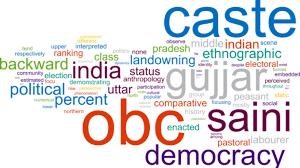
Context
The Justice G. Rohini-led commission for the sub-categorisation of other backward classes (OBCs) has now been given yet another extension in its tenure by the President
- This is the 14th extension in tenure that the commission has been given.
About the commission
- The commission was formed in October 2017
- It was initially given 12 weeks to finish the task of sub-categorising the nearly 3,000 castes within the OBC umbrella and recommend division of the 27% OBC quota among them equitably
- As part of its work, the commission had identified dominant caste groups among all OBC communities in the Central list, finding that a small group of dominant OBC communities were crowding out a large number of communities from the 27% OBC quota.
- Consequently, the commission decided to divide all OBC communities into four broad categories, with the largest share of the quota pie going to the group that has historically been deprived of OBC quota as a result of being pushed out by dominant OBC groups.
Commission’s terms of reference:
- To examine the extent of inequitable distribution of benefits of reservation among the castes or communities included in the broad category of OBCs with reference to such classes included in the Central List.
- To work out the mechanism, criteria, norms and parameters in a scientific approach for sub-categorisation within such OBCs.
- To take up the exercise of identifying the respective castes or communities or sub-castes or synonyms in the Central List of OBCs and classifying them into their respective sub-categories. A fourth term of reference was added on January 22, 2020.
- To study the various entries in the Central List of OBCs and recommend correction of any repetitions, ambiguities, inconsistencies and errors of spelling or transcription.
What is sub-categorisation of OBCs?
- The idea is to create sub-categories within the larger group of OBCs for the purpose of reservation.
- OBCs are granted 27% reservation in jobs and education under the central government, this has been a legal debate for other reservation categories too
- In 2022, a Constitution Bench of the Supreme Court reopened the debate on sub-categorisation of Scheduled Castes and Scheduled Tribes for reservations.
- For OBCs, the debate arises out of the perception that only a few affluent communities among the over 2,600 included in the Central List of OBCs have secured a major part of the 27% reservation.
- The argument for creating sub-categories within OBCs is that it would ensure “equitable distribution” of representation among all OBC communities.
- It was to examine this that the Rohini Commission was constituted on October 2, 2017
Need for subcategorization
- Due to inequalities and further inequalities within unequal entities.
- Reservation in jobs and education did address socio-economic disparities in India to some degree, but, the benefits of reservation have not been distributed equitably
- Large segments of the weaker sections and backward classes continue to have no access to quality education or meaningful employment.
- The relatively rich and dominant sections among the backward castes have tended to take up a disproportionately larger share of the reservation pie.
- Failure in effectively preventing large sections of the creamy layer from taking advantage of the quota system to the detriment of the poorer sections among their own caste groups.
- To ensure a more equitable distribution of reservation benefits by further differentiating caste groups coming under backward classes on the basis of their levels of social and economic backwardness.
- Lacunae in categorisation of the creamy layer led to the need to differentiate among the caste groups.
- Vote-bank politics has caused prioritising of caste-based categorisation over income-based differentiation to identify reservation beneficiaries.
- The reservation pie is limited, and no group, whether rich or poor, dominant or subservient, can hope to gain except at the expense of another socio-economic category.
Findings of the commission
- In 2018, the Commission analysed the data of 1.3 lakh central jobs given under OBC quota over the preceding five years and OBC admissions to central higher education institutions, including universities, IITs, NITs, IIMs and AIIMS, over the preceding three years.
- The findings were: 97% of all jobs and educational seats have gone to just 25% of all sub-castes classified as OBCs; 24.95% of these jobs and seats have gone to just 10 OBC communities; 983 OBC communities — 37% of the total — have zero representation in jobs and educational institutions; 994 OBC sub-castes have a total representation of only 2.68% in recruitment and admissions.
- Total number of Group A to Group C employees (including safai karmacharis) was 5.12 lakh – Of these, 17.70% are SC, 6.72% ST, 20.26% OBC (Other Backward Classes), and 0.02% EWS (Economically Weaker Sections).
- In Group-A, the highest tier among these, the representation of SCs is just 12.86%, of STs 5.64% and of OBCs 16.88%. Reservation for these communities is 15%, 7.5% and 27% respectively.
Challenges
- Disruptions caused by COVID-19 pandemic.
- Different states census underway – Bihar government is in the middle of its caste-based survey in the State and the Uttar Pradesh government is in the process of conducting a fresh survey to assess the need for OBC reservation in its local body elections, with other States like Madhya Pradesh and Maharashtra also looking to form panels to implement OBC reservation in local body polls.
- Government lacks information for data enumeration of OBC
- Data from 2011 Socio-Economic Caste Census were never made public.
- Enumeration of OBC data is administratively complex and the information lacks completeness and accuracy since the State and Central list of OBCs are distinct.
- It may lead to breach of apex court’s 50-per-cent ceiling, since many communities have sought separate reservations at the State and Central levels across India.
Way forward
- According to 2018 data, just ten OBC communities have taken the 25 per cent of reserved central jobs and institutional seats. Also, 97 per cent of the reserved jobs and seats have gone to 25 per cent of OBC sub-castes.
- Hence, there is a need to re-establish equity and the task has been handed over to Rohini Commission
- Once completed, the report by Justice G Rohini commission is also likely to undergo judicial review
Source: The Hindu
GS-III
Senna Spectabilis
Context
The Nodal Centre for Biological Invasions (NCBI) at the Kerala Forest Research Institute (KFRI) has recently come out with a management plan to eradicate Senna spectabilis.
What is Senna spectabilis?
- Senna spectabilis is an invasive species.
- It is introduced as an ornamental species and for use as firewood from South and Central America.
Key facts about the Periyar Tiger Reserve
- It is nestled in the southern region of Western Ghats in the state of Kerala.
- It is drained by the rivers Mullayar and Periyar.
- Flora: tropical evergreen, semi-evergreen, moist deciduous forests and grasslands.
- Fauna: Tiger, Elephant, Lion-tailed macaque, Nilgiri Tahr etc.
Source: The Hindu
Yaya Tso Lake
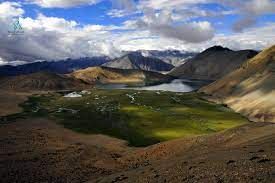
Context
Recently, Yaya Tso Lake was declared Ladakh’s first biodiversity heritage site under the Biological Diversity Act.
Key facts about the Yaya Tso Lake
- Lake Yaya Tso is known as a bird's paradise for its beautiful lake located at an altitude of 4,820 metres in Ladakh.
- It is a nesting habitat for a large number of birds and animals, such as the bar-headed goose, black-necked crane and brahminy duck
- It is also one of the highest breeding sites of the black-necked crane in India.
What is the Secure Himalaya project?
- It is funded by the Global Environment Facility.
- It supports the government’s efforts for the conservation of snow leopard and its habitat by developing and implementing a landscape-based approach for Himalayan ecosystems, and addresses key issues of habitat degradation, threatened livelihoods and illegal trade in wildlife.
- It was launched in 2017.
Project Landscapes:
- Changthang, Ladakh Landscape, Jammu & Kashmir
- Lahaul-Pangi and Kinnaur Landscapes,
- Gangotri-Govind and Darma-Byans Landscapes,
- Khangchendzonga-upper Teesta Valley.
Source: The Hindu
Red-headed vulture
Context
Recently, The Red-headed vulture was spotted in the Asola Bhatti Wildlife Sanctuary.
About Red-headed vulture
- This is one of the 9 species of Vulture which are found in India
- It is also called the Asian King vulture or Pondicherry Vulture was extensively found in India but its numbers drastically reduced after diclofenac poisoning.
- Conservation status
- IUCN Red List: Critically Endangered
- Wildlife Protection Act, 1972: Schedule 1
Key facts about the Asola Bhatti Wildlife Sanctuary
- It is located on the Southern Delhi Ridge of the Aravalli hill range on the Delhi-Haryana border and in Southern Delhi as well as northern parts of the Faridabad and Gurugram districts of Haryana.
- It is at the end of an important wildlife corridor that starts from Sariska National Park in Alwar, Rajasthan.
- Flora: Wide variety of trees, shrubs, herbs and grasses.
- Fauna: A large number of mammals, reptiles, amphibians, butterflies and dragonflies
Source: PIB
|
38 videos|5293 docs|1118 tests
|
FAQs on UPSC Daily Current Affairs- 1st February 2023 - Current Affairs & Hindu Analysis: Daily, Weekly & Monthly
| 1. What are the three stages of the UPSC exam? |  |
| 2. What does GS-I cover in the UPSC exam? |  |
| 3. What is the significance of GS-II in the UPSC exam? |  |
| 4. What are the subjects covered in GS-III of the UPSC exam? |  |
| 5. How can I prepare for the UPSC exam effectively? |  |



